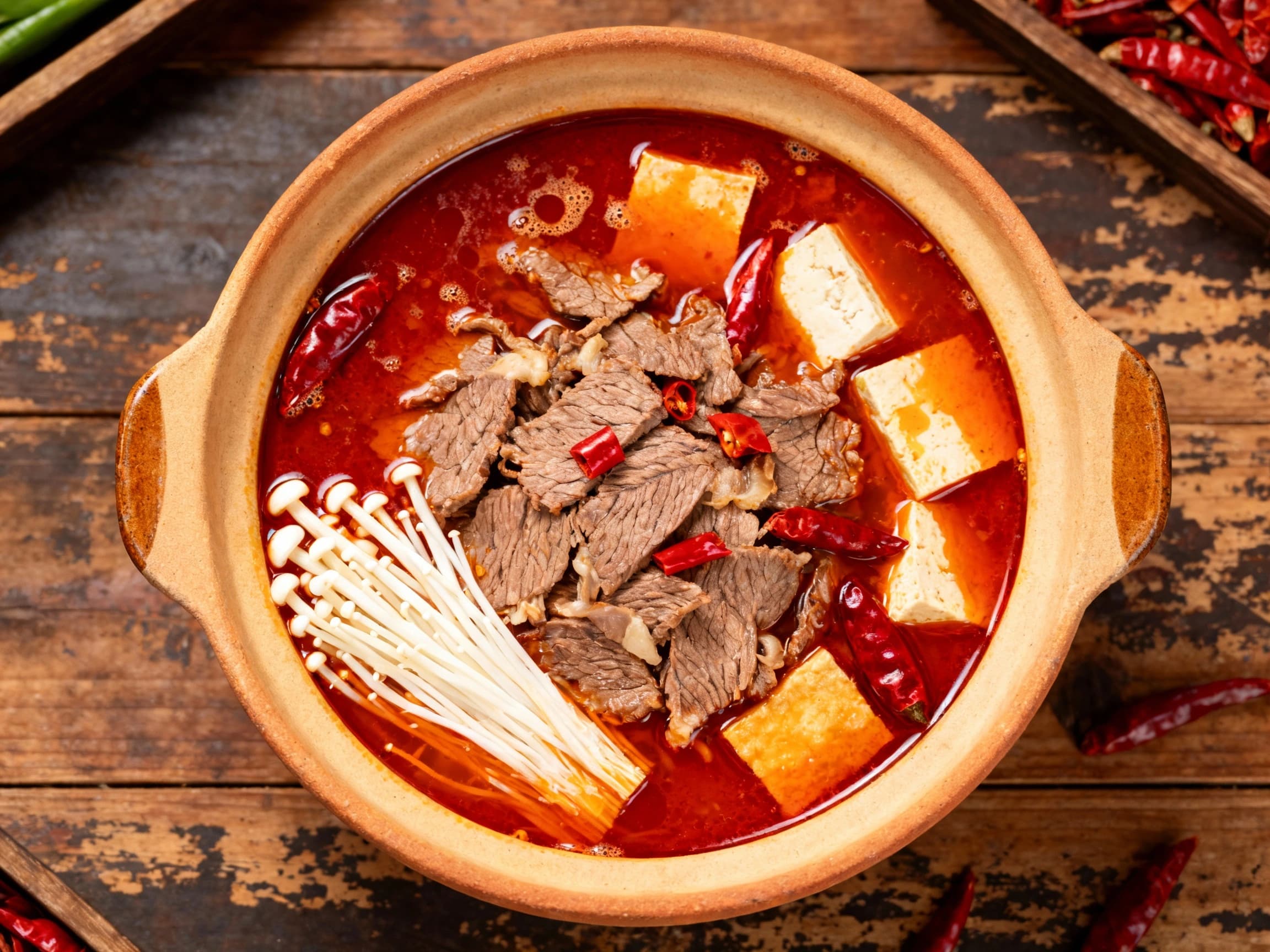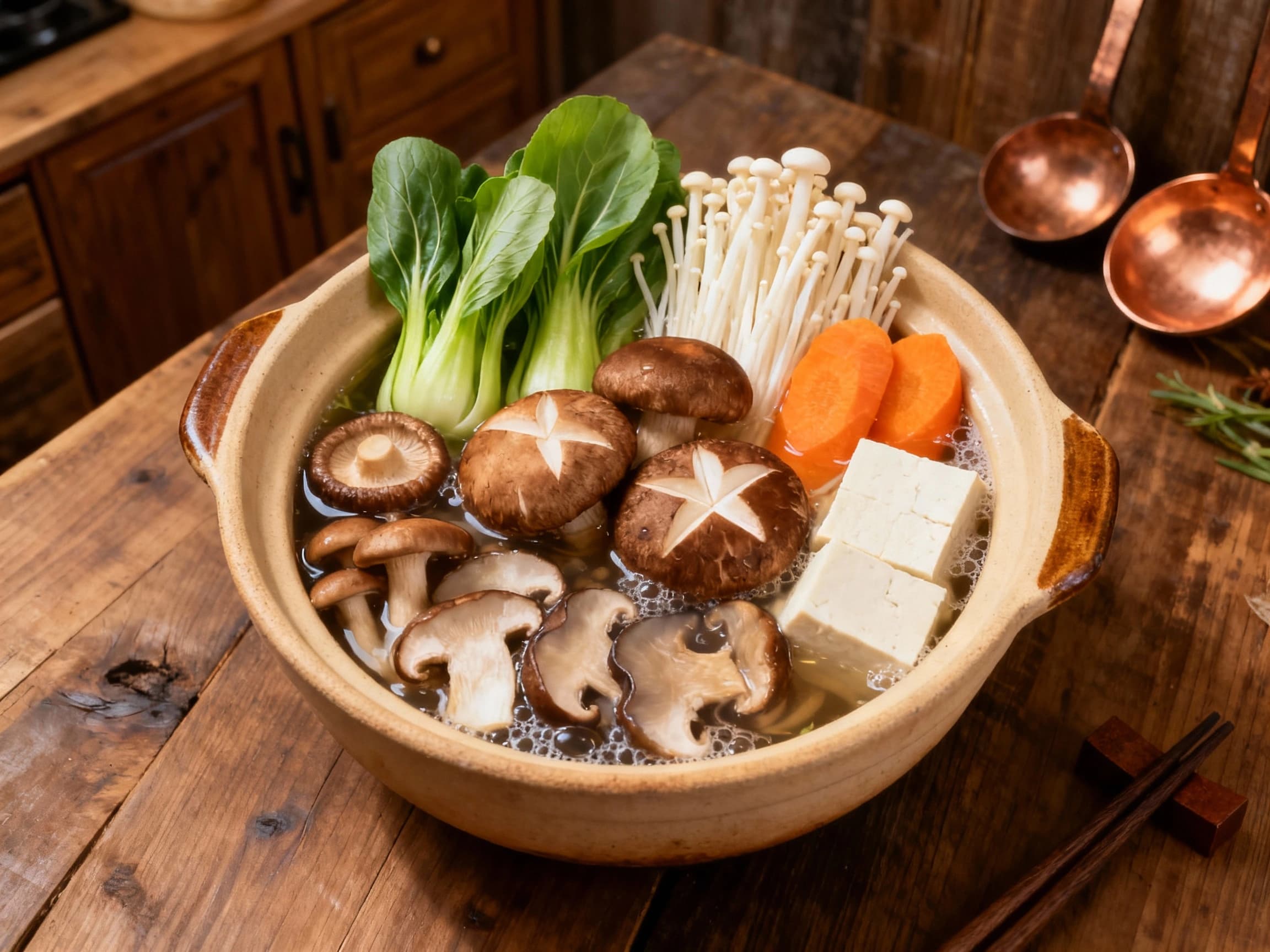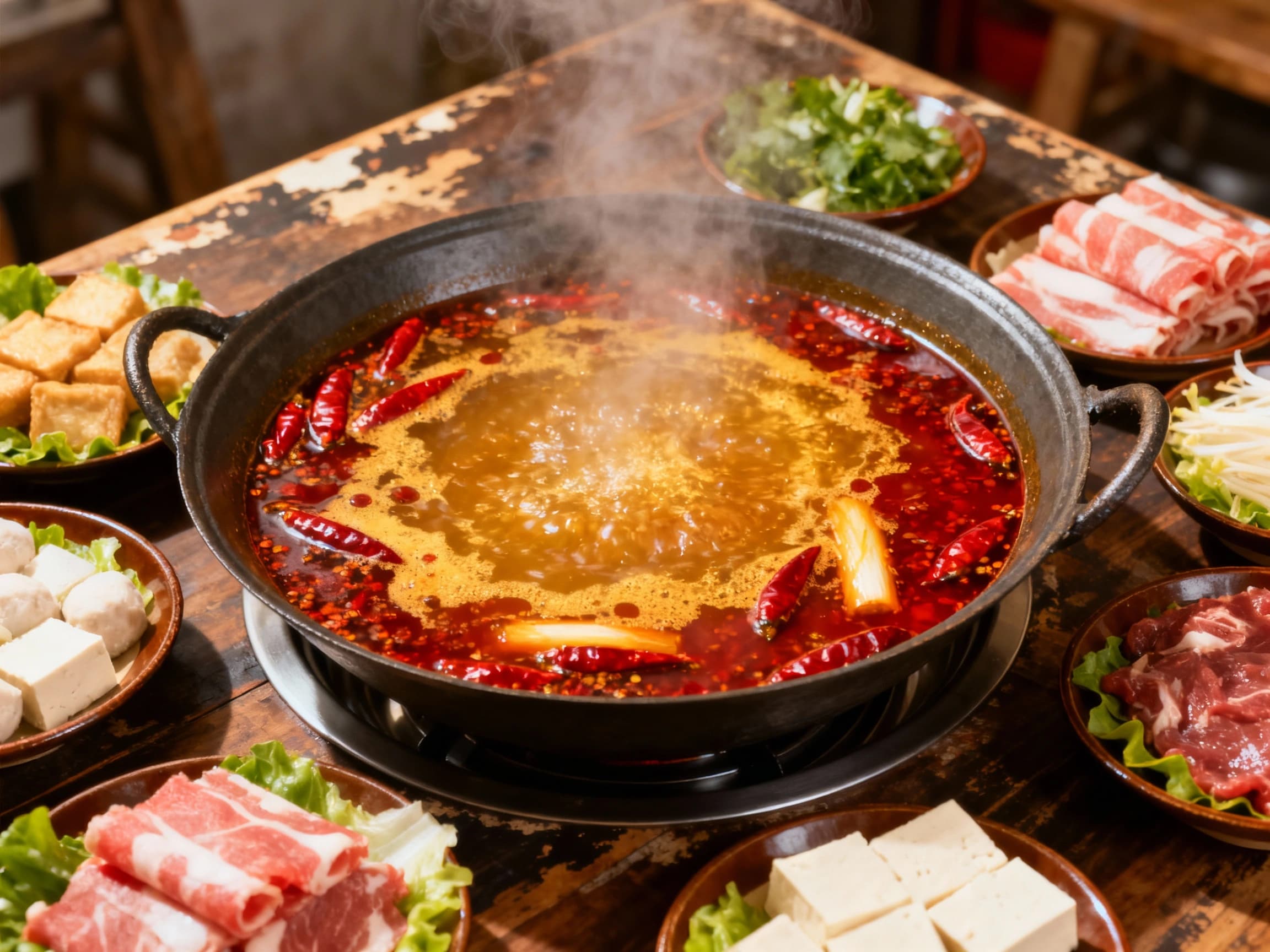
Hot Pot
火鍋
- Country
- China
- Region
- Sichuan
- Recipes
- 3 Recipes
Dish information
Hot Pot, known as 'Huo Guo' (火鍋) in Mandarin, is a communal dining experience with a history stretching back over a thousand years in China. Archaeological evidence suggests early forms existed during the Liao Dynasty (907–1125), primarily enjoyed by nomadic Khitan tribes as a practical way to cook meat in cold climates. However, its widespread popularity and regional diversification truly took off during the Qing Dynasty (1644–1912). Sichuan and Chongqing, in particular, became famous for their bold, spicy versions, characterized by the liberal use of chili peppers, Sichuan peppercorns, and fermented broad beans (doubanjiang). This spicy iteration, known as Chongqing hot pot, gained immense popularity due to its ability to warm the body and numb the senses with its characteristic 'mala' (麻辣) flavor profile. Culturally, hot pot is the epitome of togetherness and shared abundance. It symbolizes unity, community, and the joy of gathering around a shared meal. The act of dipping raw ingredients into a communal boiling pot encourages conversation, connection, and a festive atmosphere. Historically, it was a practical way for families and communities to utilize available ingredients during colder months. Renowned for its versatility, hot pot allows diners to customize their experience with an endless array of meats, vegetables, seafood, and noodles. Its evolution has led to numerous regional variations across China and Asia, each with its unique broths and dipping sauces, cementing its status as a cherished and dynamic culinary tradition that continues to adapt and thrive.
Timeline
Early archaeological evidence suggests forms of hot pot existed during the Liao Dynasty.
The Liao Dynasty concludes, with hot pot traditions likely continuing to evolve amongst nomadic groups.
The Qing Dynasty begins, a period that saw hot pot gain wider recognition and regional adaptation across China.
Hot pot emerges as a popular dish in Beijing, particularly for imperial officials and royal courts.
The spicy Sichuan and Chongqing styles of hot pot begin to develop their distinctive 'mala' flavor profiles.
Post-revolution, hot pot remains a popular communal dish, adapting to changing social and economic conditions.
Economic reforms popularize Chongqing's fiery hot pot style, leading to its widespread fame.
Hot pot transcends regional boundaries, becoming a global culinary phenomenon with countless international adaptations.


